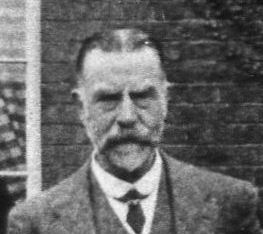

|
|
|
|
|
|
Hallo again to all. We were recently reminded of a hymn that many an Anglican has sung over the years, written by John Oxenham: 
In Christ there is no east or west, The sentiment is lovely, if perhaps a bit saccharine, but the theology is quite good. As Paul says, 'one faith, one Lord, one baptism'. Yet wandering across the earth and the church visible, we have found many divisions, whether they be parish, convocation/deanery, diocese, province, or communion. In Christ there may be no east or west, but we clearly prefer—even need—geographic boundaries. The early church, as it became part of the civil administration of the Roman Empire, adopted the civil boundary of the diocese as its own set of boundaries for the authority of bishops. The First Council of Nicaea may have produced a much better known creedal statement, but in between Arians and homoousios, the bishops of the church assembled (and Constantine) took the time to discuss the geographic authority of the sees of Alexandria, Antioch, Rome, and Jerusalem. Our beloved Communion is no stranger to these sorts of 'geographifications' of the heavenly fellowship. We, after all, are headed by the Archbishop of Canterbury who is 'Primate of All England,' while the Archbishop of York is the 'Primate of England.' The two sees spent centuries squabbling over their primacy. Canterbuy won, though the two may each carry their metropolitan crosses in the other's jurisdiction. From such things are compromises made. The connection of church and geography also shows up in the British Isles and North America with the rogation days, when parishes traditionally beat the bounds of their parish and give thanks for a good harvest. These practices were restored to our tradition under Elizabeth I in 1559. A collect for rogation days did not make it into an English prayer book revision a few decades later, but they were introduced in the American prayer book of 1928: ALMIGHTY God, Lord of heaven and earth; We beseech thee to pour forth thy blessing upon this land, and to give us a fruitful season; that we, constantly receiving thy bounty, may evermore give thanks unto thee in thy holy Church; through Jesus Christ our Lord. Amen. We have also recently had less joyous occasions to mark boundaries in the Communion, and we have had non-geographic innovations in terms of bishops and their authority. In England, in South Sudan, in the United States and around the world, Anglican churches have been caught up in civil strife as symbols of both discord and unity. The choice of the US House of Bishops' meeting to record as merely absent their seceded Southern colleagues in the mid 19th century exemplifies both aspects elegantly. Similarly, we see political boundaries superseded in the Provinces of Southern Africa, the Southern Cone, South East Asia, and others. While we cannot ignore these divisions nor the colonialist origins of much of the Anglican Communion's churches, their geographic spread also marks out the unity of the church. Where there are Christians, they bring the names of their lands and peoples to the dioceses, churches, and parishes they set up. Since 1992, we have been able to rejoice that the Anglican Church in Aotearoa, New Zealand and Polynesia is just as readily Te Hahi Mihinare ki Aotearoa ki Niu Tireni, ki Nga Moutere o Te Moana Nui a Kiwa. When the writer of Acts describes the day of Pentecost, he falls back on geographic divisions along with ethnic ones to describe the peoples who gather in unity: 'Parthians, Medes, Elamites, and residents of Mesopotamia, Judea and Cappadocia, Pontus and Asia, Phrygia and Pamphylia, Egypt and the parts of Libya belonging to Cyrene, and visitors from Rome, both Jews and proselytes, Cretans and Arabs'. In a world where some call for 'building walls' and others fear those who cross their borders, we are mindful of what a boundary can mean when it is not a bar to keep out the stranger. It can be a reminder of our past, a landmark in our present, and an expression of the many diverse peoples tied together in the unity of Christ. In what ways have you found boundaries as markers, as things to be crossed, or even as reminders of our diversity? How can we be Christians, and who is our neighbour in times of boundaries? Write us a letter to let us know. See you next week.
| ||
This web site is independent. It is not official in any way. Our editorial staff is private and unaffiliated. Please contact editor@anglicansonline.org about information on this page. ©2015 Society of Archbishop Justus. Please address all spam to press@anglicansonline.org |